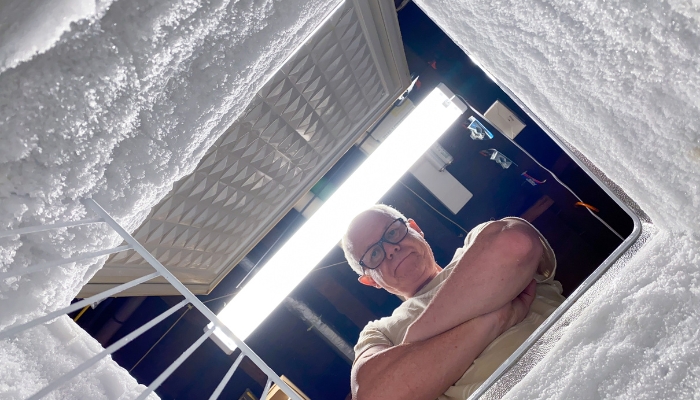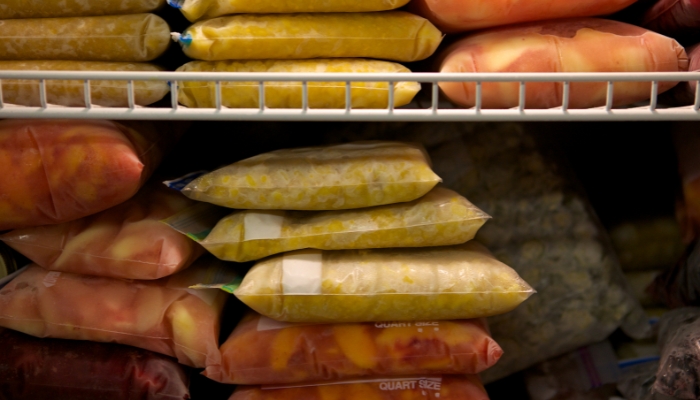Deep Freezer Buying Guide: Finding the Perfect Features for Your Family | Fred’s Appliance | Eastern Washington’s, Northern Idaho’s, and Western Montana’s largest appliance dealer with stores located
What is a deep freezer? The purpose of a deep freezer is to keep larger amounts of food frozen for longer periods of time without freezer burn and other issues that occur in regular household freezers. Deep freezers are great for buying food in bulk and meal prepping. A deep freezer is either an upright or chest-shaped freezer that can be stored in a garage or somewhere you have extra space. There’s a lot that goes into choosing the right kind of deep freezer, so let’s get to it!
Mục Lục
Upright vs. Chest: The Cold Facts

One of the biggest choices regarding deep freezers is deciding on an upright or chest freezer. Both upright and chest freezers have their advantages and disadvantages based on your needs . Let’s compare!
Advantages of Upright
- Uprights can be easier to organize, store, and access food than a chest freezer
- They tend to be easier to clean than a chest freezer
- An upright requires less floor space than a chest freezer
- They may come in a variety of finishes
Disadvantages of Upright
- In the event of a power outage, food can spoil more quickly because the door seal lets cold air out
- It can be hard to store oddly shaped or larger foods
Advantages of Chest Freezers
- Depending on the size, chest freezers can have more cubic storage capacity than an upright
- Its design tends to be more energy efficient than an upright freezer because the heavy lid that keeps the airtight seal in place
- Chest freezers often run quieter and are more affordable than their upright counterparts
- Air does not circulate as much in chest freezers, preventing freezer burn better than an upright, which allows you to store food for longer periods of time
Disadvantages of Chest Freezers
- Requires bending over to reach items at the bottom (if you’re short, invest in a stool!)
- Cleaning is not as easy when you must reach into the chest to scrub it
- It is more difficult to see what is being stored (not ideal if you aren’t an organized person)
Pro Tip: Keep in mind that any freezer stored in a garage during summer months will typically have a shorter lifespan because it will work overtime to fight the extreme temperatures. How often you open/close it will also be a factor.
Other Things to Consider
There is more to consider than just choosing upright or chest. You want to think about energy usage, defrost methods, space, and other key features. Let’s discuss these features that you will want to take into account when picking out the right freezer for you!
Energy Usage

Just like any household appliance, you want your deep freezer to be as energy efficient as possible. Twenty years ago, deep freezers used upwards of 800 kWh per year. Thankfully, modern deep freezers only use 218 kWh on average. What does this mean for your wallet? Depending on the size, running a newer model deep freezer would only cost roughly $50 a year, or $4.17 per month.
Defrost Methods
There are two types of defrost methods when it comes to deep freezers: auto defrost (frost-free) and manual defrost. The biggest difference between the two methods is how frost and excess ice are removed. Auto defrost is considered an upgraded cleaning design feature because it does not require manual labor to remove the build-up of frost or ice. Auto defrost heats up coils inside the freezer at scheduled intervals to prevent ice or frost build-up. A freezer with manual defrost does not have any automatic heating components. When there is too much frost or ice build-up, the freezer cannot cool your food efficiently because of the restriction of airflow. Most upright freezers have the auto defrost feature, while most chest freezers have the manual defrost feature. There is no guarantee that you will need to use the auto defrost feature, but it sure is a nice feature to have in case the need arises, it sure will save you the hassle of removing ice build-up manually!
Space

The final thing you need to consider is how many cubic feet you need for your freezer. Of course, you don’t want to spend more money on something that is too large for you, and you don’t want to purchase a small freezer only to find out it is too small for you and your family.
An easy way to estimate the freezer size you will need is to multiply the number of people in your family by 2.5 cubic feet. For example, for a small family of three, a freezer with eight cubic feet of storage should be plenty big enough. A larger family of 6 will need a freezer with 15 cubic feet of storage. The larger the family, the larger the freezer!
Tip of the Iceberg
We’ve covered the most important features, but there are many other specifications to look for when shopping for your new deep freezer. We have compiled a list of the most popular features to consider while you shop.
- Capacity
- Defrost Drain
- Counterbalance lid (chest freezer only)
- Storage (drawers, shelves, baskets, etc.)
- Internal lighting
- Temperature range
- Garage ready (can operate in significant temperature fluctuations)
- Door Lock
- Door/Temperature Alarm (if the door is left open or the temperature drops)
- Noise levels
Finding the Right Deep Freezer

We know there can be a lot to consider when it comes to shopping for the right deep freezer. But there’s no need to break out in a cold sweat – our team of experts at Fred’s Appliance are here to help! Visit us in-store or online – we can help you find the deep freezer that works best for your family.















![Toni Kroos là ai? [ sự thật về tiểu sử đầy đủ Toni Kroos ]](https://evbn.org/wp-content/uploads/New-Project-6635-1671934592.jpg)


